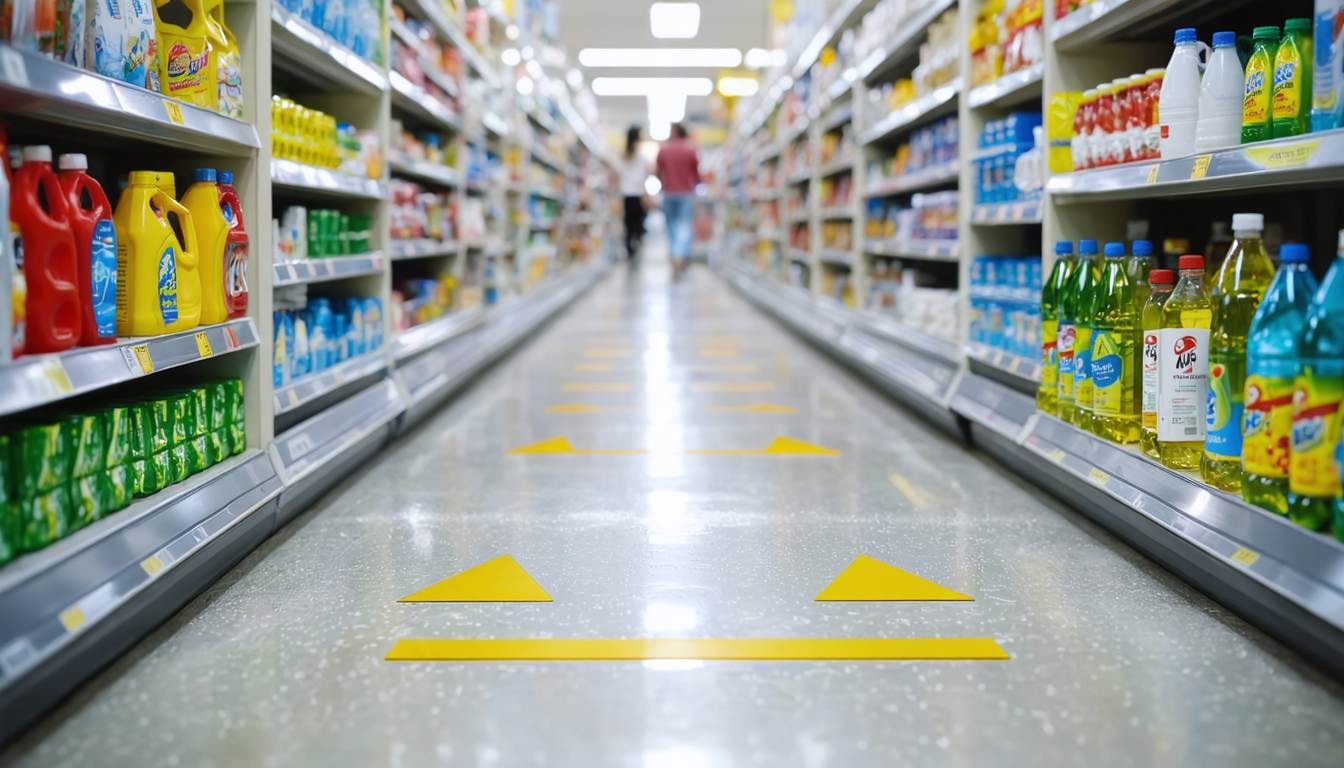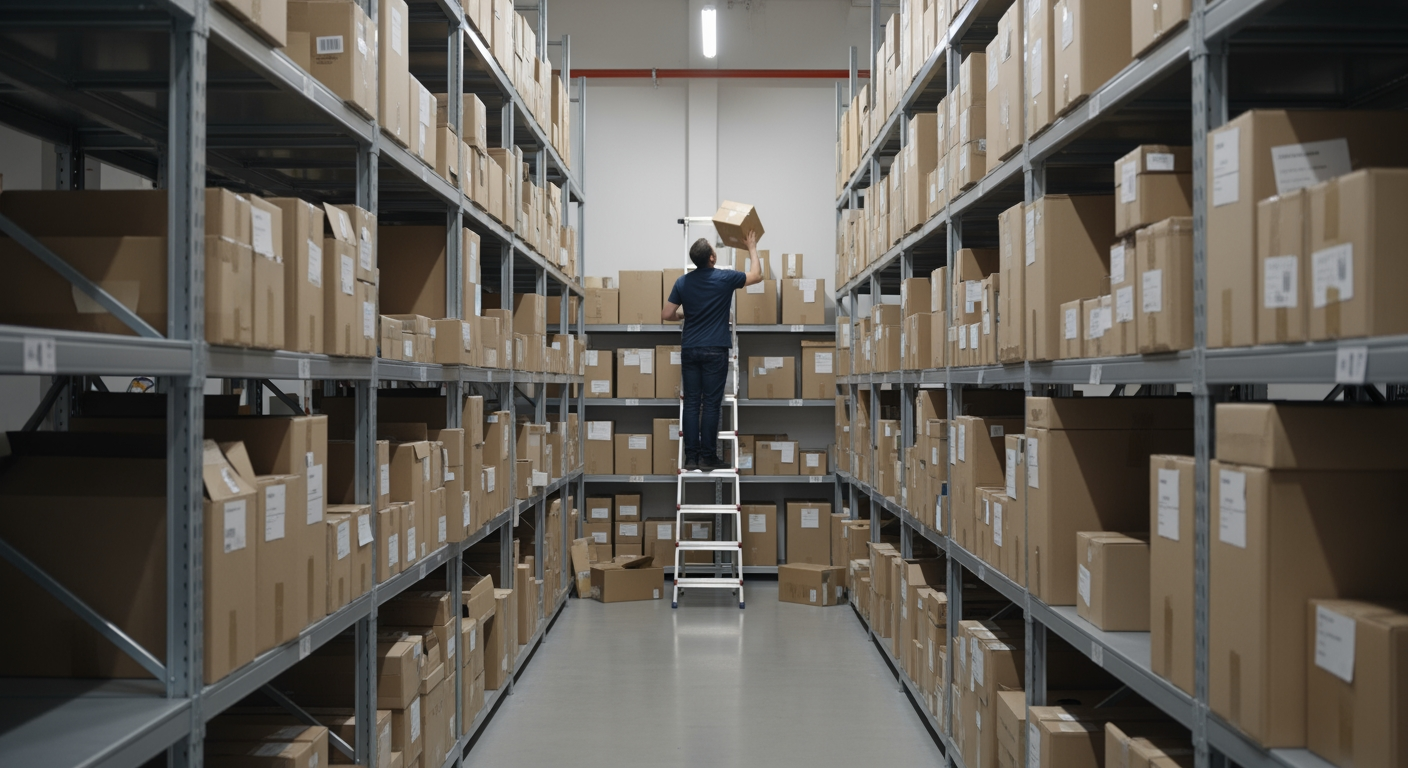Struck-by-object accidents are a costly and disruptive problem across U.S. industries, and the retail sector is no exception. Retail workers face a distinct combination of busy stockrooms, high-traffic sales floors, and frequent vehicle movement, all of which elevate the risk of being hit by moving merchandise, moving equipment, or shifting stock. Addressing these hazards is essential for maintaining smooth operations and averting injuries.
But here’s the good news: the likelihood of most of these incidents can be reduced. By combining proven safety practices with video AI, retail leaders can move from reactive investigations to forward-looking risk mitigation. This guide breaks down the true costs, root causes, and offers a clear framework for shifting from a reactive to an anticipatory safety model using current technology.
Why Struck-by-Object Accidents Are a Major Hurdle for Retail Operations
The chain reaction from a struck-by-object incident can halt retail operations—think blocked aisles, equipment downtime, and the need to reassign staff. Demands for fast restocking, increased automation, and seasonal hiring spikes amplify the risk. And with OSHA penalties averaging over $11,000 per incident in recent years, the need to reduce these injuries is clear.
The Top 4 Causes of Struck-by-Object Accidents in Retail—and How to Mitigate Them
Understanding why these incidents happen is the first step toward addressing them. Here’s a breakdown of the four leading causes in retail, with practical risk-reduction tips and how video AI can strengthen your safety program.
1. Poor Housekeeping and Cluttered Storage
The Hazard:
In a busy backroom, a worker might reach for a box on an upper shelf while precariously stacked merchandise teeters nearby. An unbalanced stack can easily tumble and strike an employee, a common occurrence when aisles are cluttered or storage racks are overfilled.
Conventional Mitigation:
-
Enforce “clear aisle” policies and regular housekeeping checks.
-
Store heavier items on lower shelves and avoid overhanging stock.
-
Schedule routine inspections for shelf stability and organization.
How AI Improves Mitigation:
Video AI can flag crowding, clutter, or blocked walkways as they happen. When a stockroom gets too congested, the system can surface alerts so teams can clear hazards before an incident occurs. Over time, data from flagged footage help pinpoint recurring trouble spots, making daily housekeeping more targeted and effective.
2. Vehicle and Forklift Movement in Stockrooms
The Hazard:
When a team member moves inventory with a pallet jack or forklift, poor visibility or miscommunication can lead to a struck-by-vehicle injury, especially if another employee inadvertently steps into the vehicle's path.
Standard Mitigation:
-
Strict operator training and certification for forklifts and pallet jacks.
-
Clear marking of pedestrian and vehicle pathways.
-
Scheduled maintenance and routine safety checks of all equipment.
How AI Strengthens Mitigation:
Video AI can detect when forklifts or other vehicles enter “no-go” pedestrian zones, flagging unsafe movements in the moment. Systems can also surface these unsafe events, giving safety leaders data to update traffic routes or retrain staff—without waiting for manual incident reports.
3. Improper Material Handling and Stacking

The Hazard:
An employee might pile products too high on a cart to save time. When the cart turns a corner, a box can slide off and strike a coworker. Many struck-by injuries stem from improper stacking or hurried, unbalanced loads.
Established Mitigation:
-
Training for safe lifting, stacking, and transport procedures.
-
Pre-shift checks for unstable loads or damaged shelving.
-
Use of anti-tip brackets or barriers for high shelves.
How AI Boosts Mitigation:
Video AI can monitor for specific behaviors, like running, that can precede handling accidents. When the system detects events like a person running or entering a restricted “no-go zone,” it surfaces the footage, prompting coaching or policy adjustments to help reduce risks.
4. Behavioral Risks: Rushing, Distraction, and Ignoring Protocols

The Hazard:
During peak hours, employees may rush to restock shelves, and distractions can lead to accidents. For example, an employee using a handheld device might walk into the path of a coworker moving merchandise. Distraction and rushing can undermine established safety protocols.
Conventional Mitigation:
-
Regular safety briefings and signage reinforcing “no running” and “stay alert” rules.
-
Task rotation to reduce fatigue and maintain focus.
-
Incident reporting and review to identify behavioral trends.
How AI Reinforces Mitigation:
Systems can flag “running” events, both of which are proxies for rushed behavior. Reviewing these alerts helps managers identify high-risk times (such as shift changes or restocking rushes) and target training or staffing adjustments accordingly.
Integrating a Modern AI Camera System: From NVR to AI Insights in Retail
Adopting new safety tech doesn’t mean ripping out your existing cameras. Today’s video AI platforms are built to work with the cameras you already have—including most POE models. Here’s how a cloud-native approach improves your safety program:
|
Feature |
Traditional NVR |
Video AI platform |
|---|---|---|
|
Camera Compatibility |
Often requires upgrades |
Works with most existing cameras |
|
Storage |
On-prem hardware |
Secure, cloud-native, scalable |
|
Maintenance |
On-site, frequent |
Minimal, remote updates |
|
User Access |
Limited seats |
Unlimited users, unified dashboard |
|
Video Review |
Manual, time-consuming |
AI-powered search and detection |
|
Actionable Insights |
Passive footage |
Real-time safety alerts |
A video AI system acts as a smart layer that bridges your on-prem cameras to a secure, cloud-native dashboard. No more bulky servers or endless footage review. Automated analysis surfaces critical safety events—like forklifts in pedestrian areas, running in aisles, or crowding—so you can act on developing situations.
Camera Compatibility Tip: You don’t need a full system replacement. These platforms are designed to work with most legacy and existing POE cameras.
Integration Best Practices:
-
Align new video tools with your existing safety policies and requirements (Source: OSHA 29 CFR 1910.22 and 1910.176).
-
Run a risk assessment: Map high-risk areas in your store or DC and ensure camera coverage matches hazard zones.
-
Choose systems that support unlimited user access—so safety isn’t siloed in one department.
-
Use data from video AI to inform regular safety huddles, incident reviews, and staff training.
Enhance Retail Safety—Book a Consultation
Every struck-by-object incident is a chance to improve—not just to react. By combining proven safety practices with video AI, retail leaders can reduce risk, speed up investigations, and build a safety culture that supports every team member.
Ready to see how insight-driven video AI can empower your retail safety team? Book a consultation with Spot AI’s experts and get tailored, actionable guidance for your operation.
Frequently asked questions
What are the most common causes of struck-by-object injuries in retail?
The most common causes include poor housekeeping, cluttered storage, equipment failures, unsafe vehicle movement, and behavioral risks like rushing or distraction. These factors are widely recognized by safety organizations as leading contributors to workplace incidents.
How can retail organizations implement safety technology without disrupting operations?
Video AI platforms overlay analytics on your existing camera feeds. This means no major installation downtime, and they automate hazard detection and reporting—supporting your staff rather than replacing them.
What OSHA regulations apply to addressing struck-by-object hazards in retail?
Key OSHA regulations include 29 CFR 1910.22, which requires clear aisles and workspaces, and 1910.176, which covers safe material handling and storage. These standards also mandate regular training, inspections, and equipment maintenance.
What practical steps should retail leaders take before adopting video AI technology?
Start with a safety risk assessment, identify high-traffic and high-risk zones, and review your current camera coverage. Involve IT and safety teams early. Pilot the system in one area, learn from the data, and then expand.
How does video AI support incident investigations?
Video AI platforms automatically flag relevant events—such as vehicles in pedestrian zones or unauthorized entries—making it easier to review footage, understand root causes, and support faster, more accurate investigations for compliance.
What is the best video monitoring system for retail stores?
The ideal system is a video AI platform that integrates with your existing cameras. It should deliver real-time alerts for hazards like clutter or no-go zone violations and provide a unified cloud dashboard for rapid incident review by your entire team.
About the author
Joshua Foster is an IT Systems Engineer at Spot AI, where he focuses on designing and securing scalable enterprise networks, managing cloud-integrated infrastructure, and automating system workflows to enhance operational efficiency. He is passionate about cross-functional collaboration and takes pride in delivering robust technical solutions that empower both the Spot AI team and its customers.

























.png)
.png)
.png)